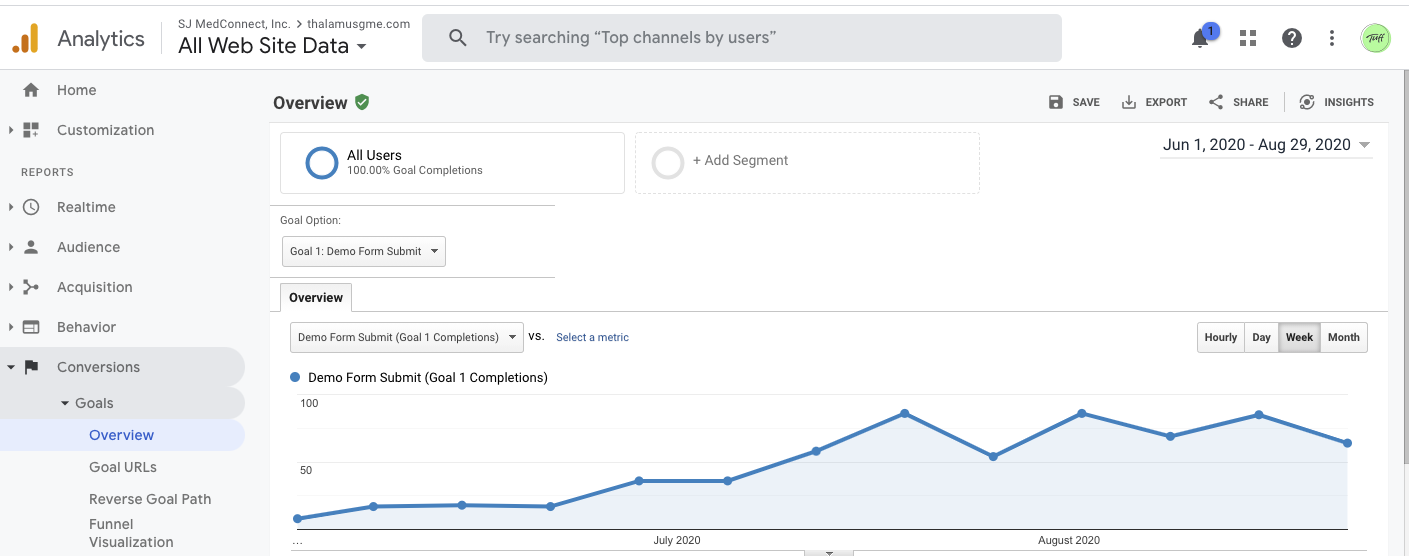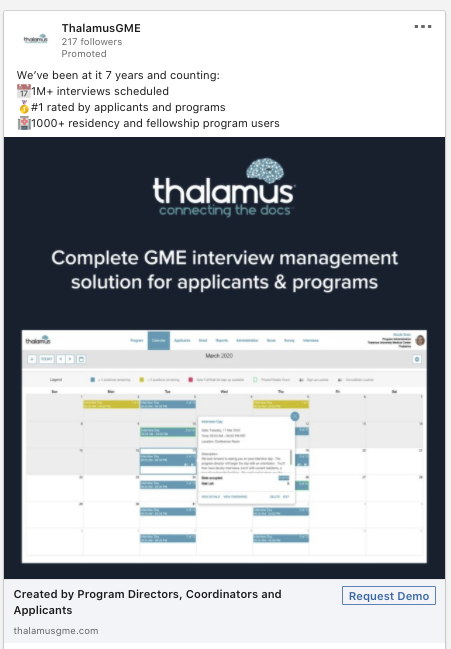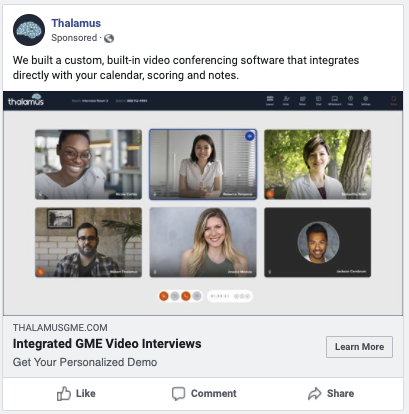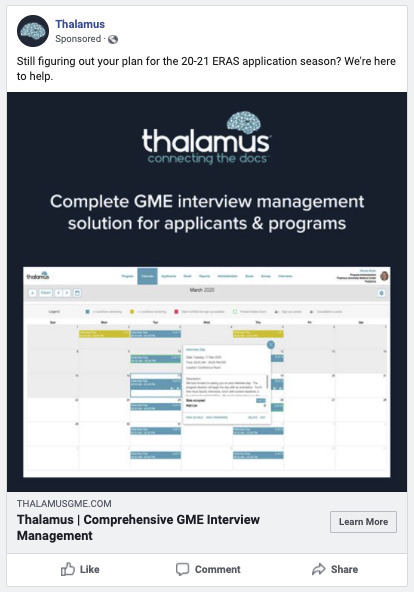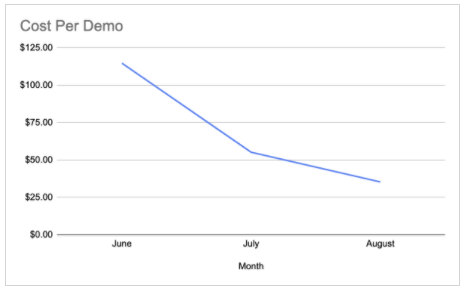From Qualified Traffic to Booked Demos: How We Helped Thalamus Increase Sales 3x
When it comes to driving demos, it’s rare that a business can rely exclusively on one channel to generate all their leads. A demo, unlike a website click or impression, is a commitment from a potential customer, and to get them to take that step, it’s a bit of an ask.
That’s why, more often than not, you’ve got to figure out the right mix of channels and touchpoints to get quality traffic to your site the first time, the second time, the third time, and then convert. It’s a funnel.
You’ve got to remind them, often and at the right times, about who you are and what makes your product valuable for them. Then, if done well, after a few site visits, they’ll agree to a demo. From there, your sales team can come in and close the deal and the rest is history.
When it comes to booking demos, there are steps. It’s a journey. You’ve got to match your marketing to this path and nurture them down the funnel.
In this post, we’re going to look at how we tackled this for Thalamus and grew their bookings consistently month over month with LinkedIn, Google, Facebook, and Bing.
Meet Thalamus
Thalamus is the premier GME interview management platform that connects residency and fellowship applicants and programs. They are a small, 20 person team, based in Nashville and distributed throughout the US. We started working with them in March 2020 with the primary goal of testing out new paid channels to help increase bookings.
“Tuff is amazing. For about 11 years, I’ve always been involved with or owned some element of a brand’s marketing efforts. I’ve been given teams that already existed or tasked with finding the right partner. Tuff is honest the first time someone/s REALLY nailed it. I mean completely nailed it! They understood us quickly. They report in weekly and the reports make sense to me. :) They have awesome ideas and follow through. I feel completely at ease that they are in charge of that critical part of the our SaaS business. They truly know everything there is and give amazing advice, direction, and take action constantly on our behalf.” – Kristi Anderson, Head of Sales, Thalamus (View our reviews on Google and YouTube)
Before we get into the process and details of our partnership, here’s a look at the last couple of months from Google Analytics. This is a 150% increase YoY in booked demos.
Before we get into the details….it’s worth noting that the interview process, due to the state of the word, had to shift virtual overnight. Thalamus was in the best position to help them with the transition so natural demand was at an all-time high.
Now, let’s talk about the details!
Step 1: Select channels based on targeting and cost
Since Thalamus hadn’t experimented on any channels we knew we would need to start lean, test out each channel, kill anything that didn’t work quickly, and then scale up what worked.
In order to determine the channels and tactics we wanted to test first, we started with their target audience.
For Thalamus, it looks something like this:
Residency coordinators or program directors at academic medical centers and hospital systems throughout the US & Canada.
Using what we knew about the target audience, as well as our experience running campaigns on almost every major channel, we selected these three channels to start:
LinkedIn Ads
LinkedIn advertising has behavior-based targeting and we knew we could get in front of people with very specific job titles. LinkedIn advertising, unlike the other channels, allows you to get very niche with professionals and industries. While expensive, testing here was a no brainer.
Facebook Ads
While we couldn’t target specific job descriptions on Facebook, we knew we could use this platform for cheap retargeting. We put a small percentage of the budget here to capture eyeball
Google
Google Ads
With Google, we wanted as many high-intent searches as possible. For Thalamus, there is a bit of seasonality so we needed to pull historical CPCs and impressions to get started. At first, we kept the keywords tight to ensure the traffic would stay healthy, and overtime we’re able to expand. We relied on a mix of competitor keywords, brand terms, and search terms to make this work.
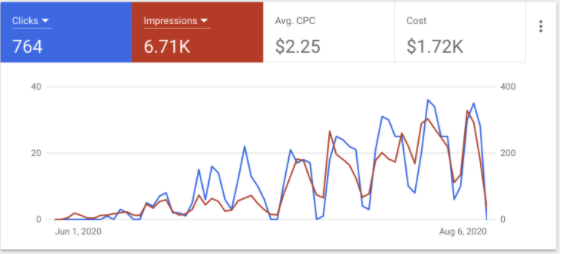
We are continuing to see an increase in Search volume and Search impressions
Bing Ads
We didn’t start out with Bing (I wish we had) but added it once we saw such good results on Google. We were able to duplicate our strategy, make small tweaks, and scale bookings with an added lift from Bing.
Bing advertising isn’t right for every industry or company but it’s less crowded (and cheaper in most cases) than Google. This helped us cover more ground and capture additional high-intent terms for Thalamus.
Step 2: Develop highly-target messaging with social proof
Now, we can’t really take credit for this but getting the copy and content right with ads, especially social ads, is really important. Our writer, Elle, dug into the target audience and helped pull out very specific trust-indicators and product features we know would stand out.
While Thalamus had never run paid campaigns, they’ve been the leader in the industry for years. We leaned hard on this experience to build as much trust with our cold audience as possible.
Step 3: Measure the results and get better
Once we aligned with Thalamus on their key objective from the paid campaigns – getting more demos booked from their website – we knew that everything we did from a measurement and optimization perspective needed to be shaped around this sole KPI.
Perhaps the most important aspect of setting yourself up for success is being able to accurately measure the results and trust the data you are receiving. Optimizing your website or campaigns based on inaccurate data may be just as bad, and in some cases even worse, than not attempting to optimize your performance at all.
With this in mind, we worked closely with Thalamus to ensure the tracking of the demo request submission form was accurate. We used this goal, along with other on-site performance metrics, as the baseline for analyzing the value of the paid traffic arriving from our paid campaigns. We also reported on leads coming from paid channels by timestamp. The Thalamus team could then score the relevancy of the form fill submissions and subsequent contact to help us determine the true value of the leads we were receiving.
With this baseline KPI driving our measurement, it naturally also drove our campaign optimizations, and we continuously reviewed our campaigns, ended campaigns, and launched new campaigns across platforms to identify the best sources of traffic. Intent-driven Search campaigns on Google and Bing were optimized by reviewing the converting keywords and search terms. For social, campaigns were optimized by reviewing the converting ad copy, audiences, and image assets. With continuous measurement and optimization, we have been able to see a steady MoM decrease of cost per lead.

Chris is a PPC Strategist based in Nashville, Tennessee. When he’s not scaling Google Ads & YouTube campaigns, he enjoys longboarding, tinkering with automation tools, and a little bit of gaming.

